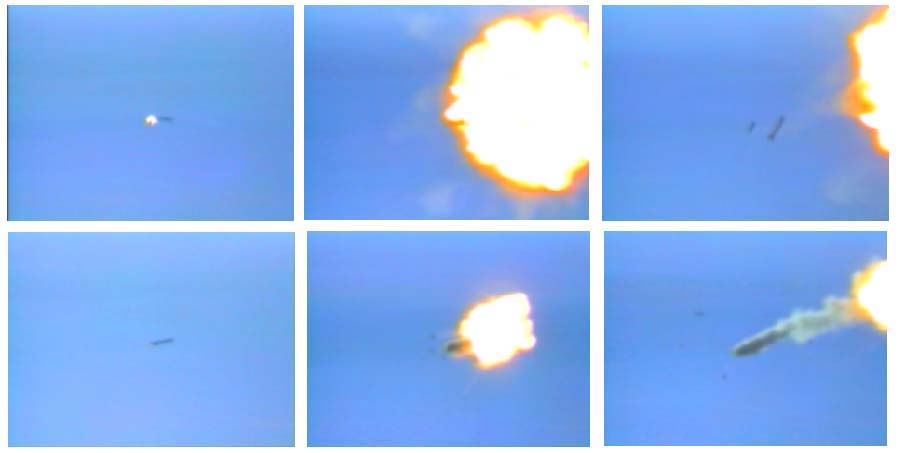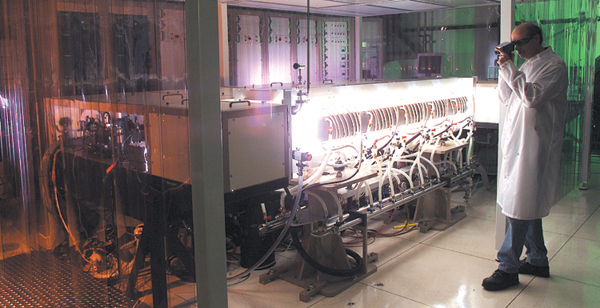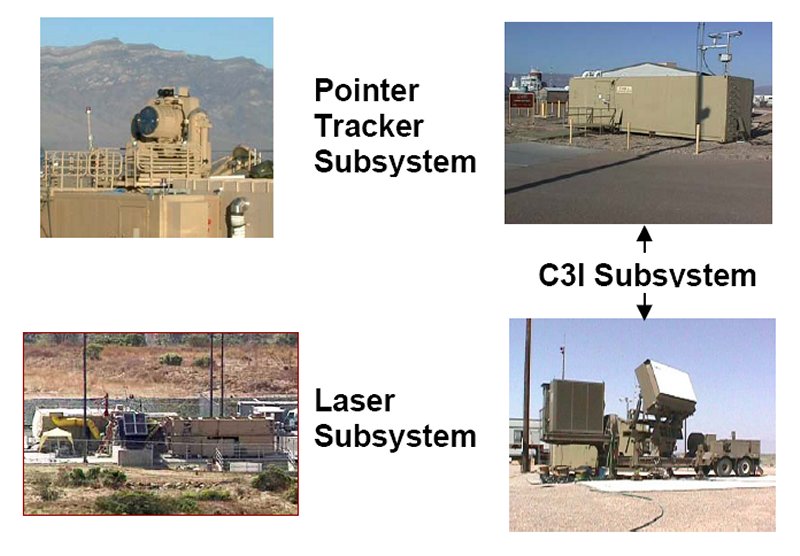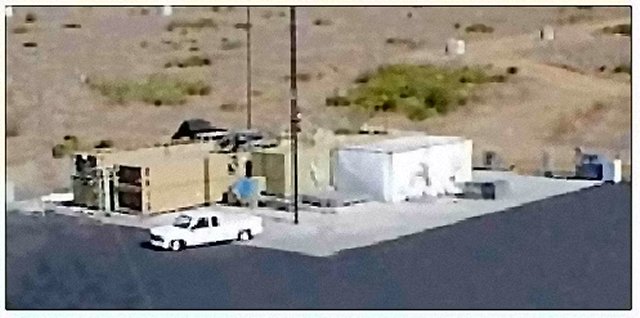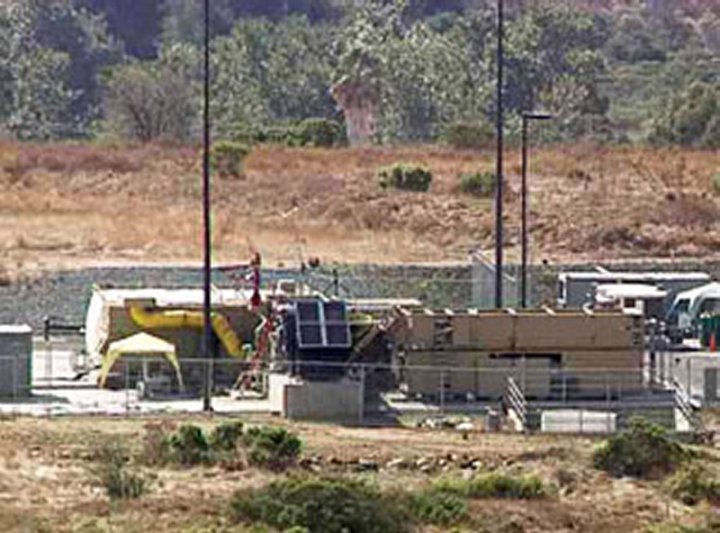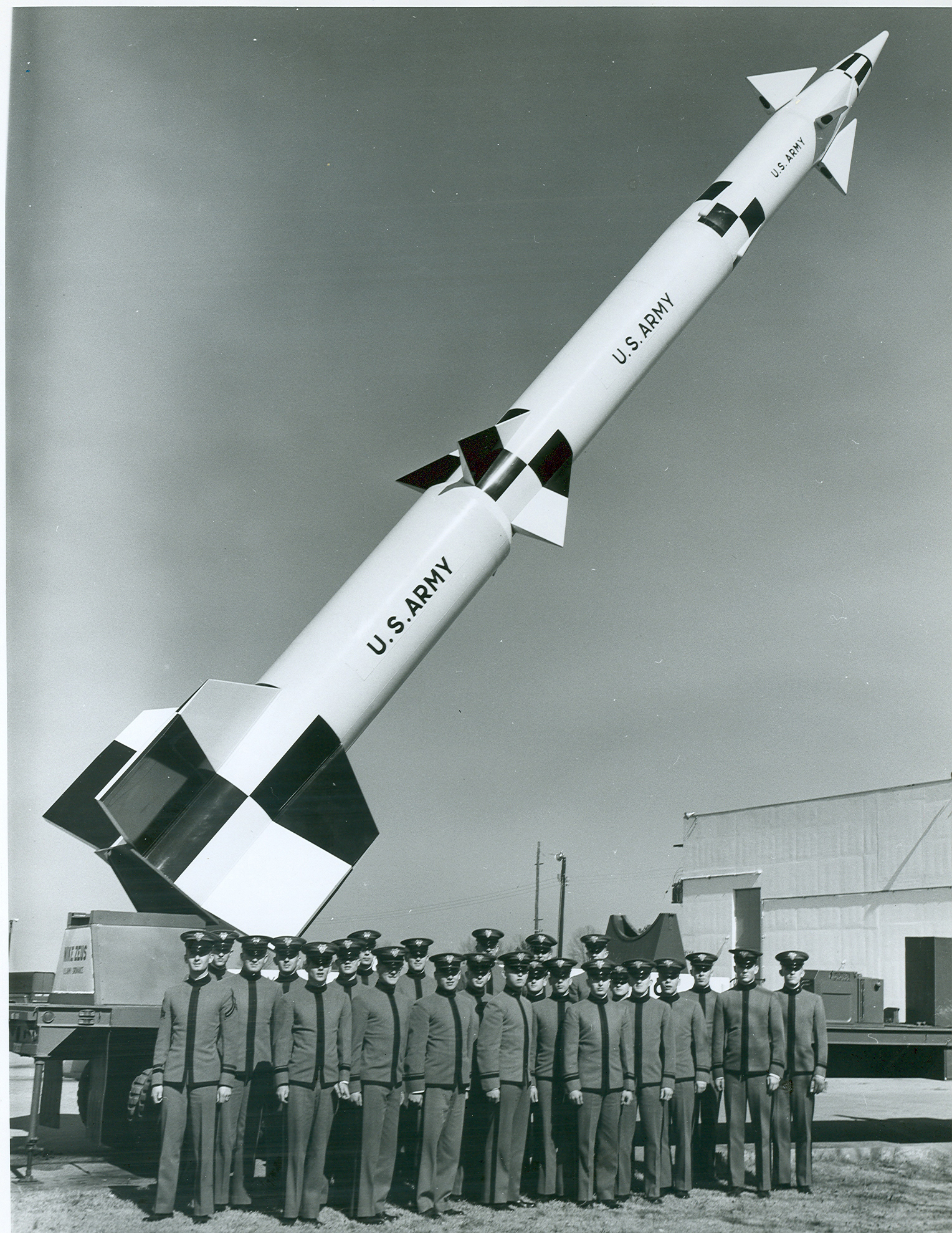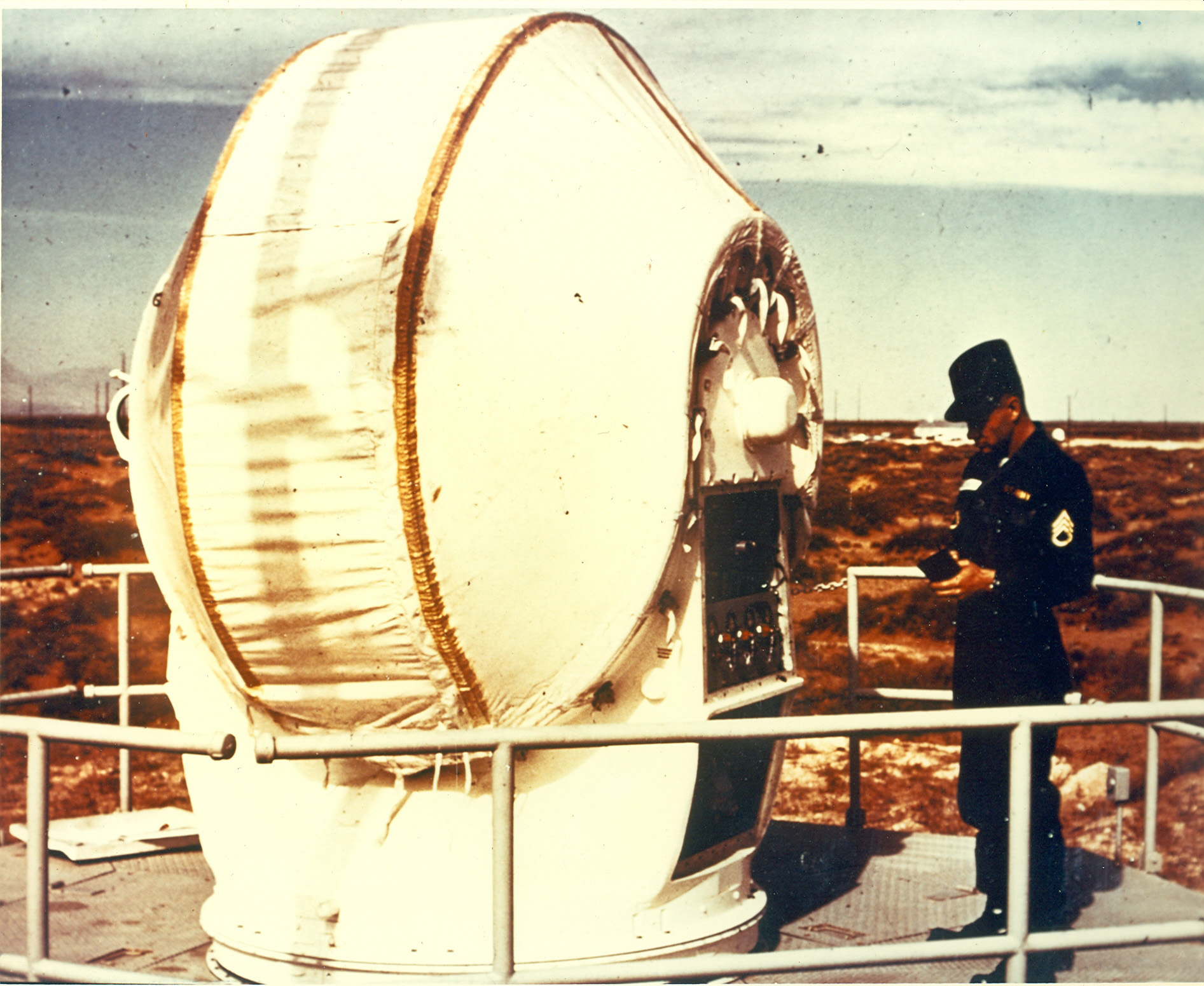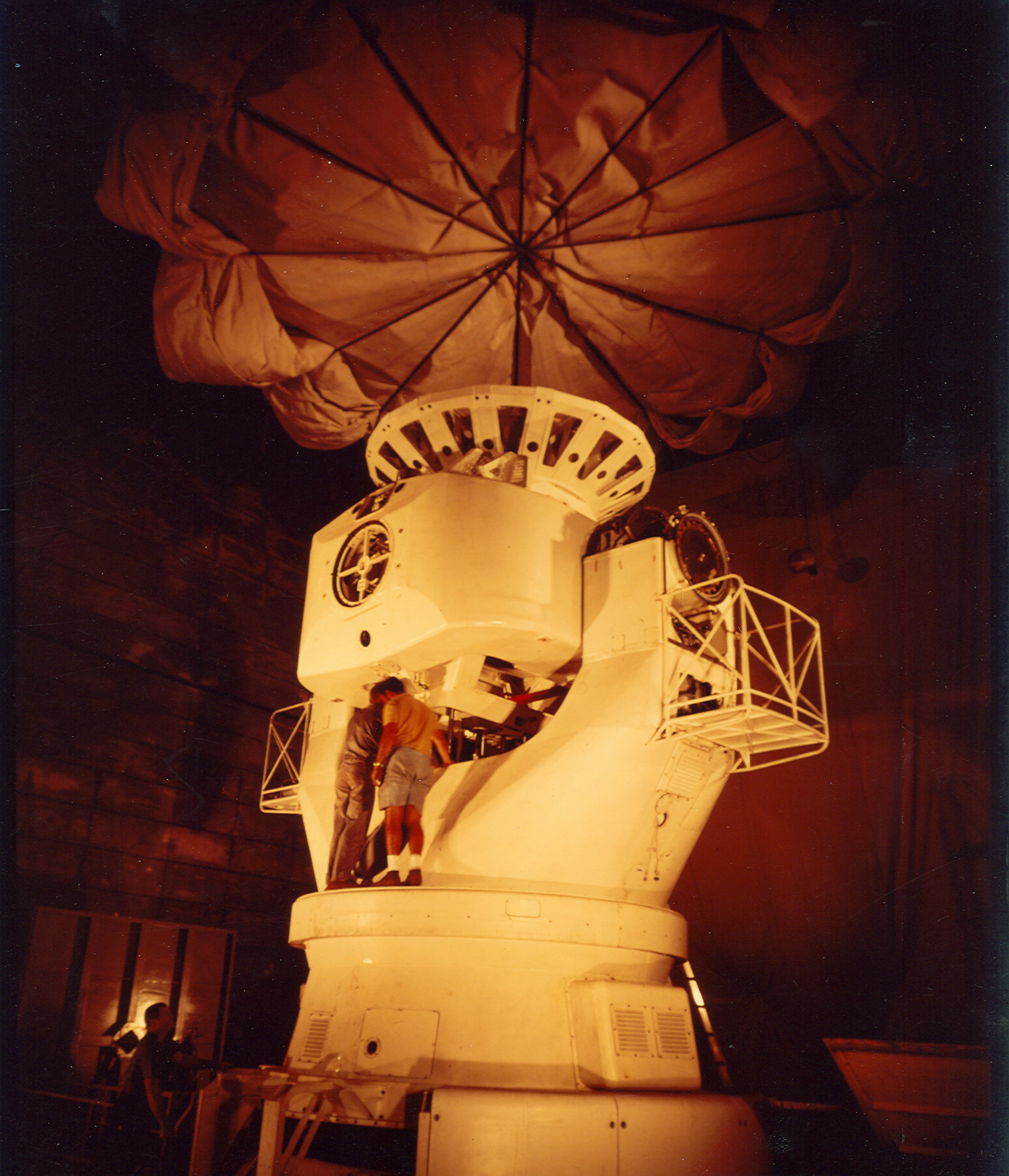|
|
|||
|
THEL Pointer Tracker Tactical High Energy Laser Systems Test Facility ..
|
|||
|
|||
Battle
Management for the Tactical High Energy Laser PDF - Northrop Grumman
|
|||
| TRW
Delivers Key THEL Subsystems to Army's Laser Test Facility for Integration
REDONDO BEACH, Calif.--(BUSINESS WIRE)--Oct. 6, 1999-- TRW (NYSE:TRW), the Army's prime contractor for the Tactical High Energy Laser-Advanced Concept Technology Demonstration (THEL/ACTD) program, has moved one step closer to demonstrating the world's first laser-based air defense system by delivering the THEL/ACTD pointer-tracker subsystem to the Army's High Energy Laser Systems Test Facility (HELSTF) at White Sands Missile Range, New Mexico. The pointer-tracker subsystem will be integrated this fall with the command, control, communications and intelligence (C3I) subsystem and the laser subsystem to form the THEL/ACTD fire unit. The C3I subsystem has been undergoing testing at HELSTF since June 1998. TRW has also begun moving the laser subsystem from the company's Capistrano Test Site in Southern California, where it has been undergoing development and testing, to HELSTF. The company expects that move to be completed by mid-October. "The transition of the key THEL/ACTD subsystems to HELSTF positions us to begin the next major phase of the program -- integration into the first fully operational fire unit," said Tom Romesser, vice president and deputy general manager of TRW's Space & Laser Programs Division and TRW's THEL/ACTD program manager. "The team continues to make significant technical progress toward the goal of demonstrating for the U.S. and Israeli governments the effectiveness of lasers against short-range rocket attacks." THEL/ACTD is a ground-based, short-range air defense system that will use a high-energy chemical laser to protect civilians and military assets against attack by terrorist threats such as Katyusha rockets. TRW leads a team of U.S. and Israeli subcontractors that is developing the THEL/ACTD fire unit for the U.S. Army Space & Missile Defense Command, Huntsville, Ala., and the Israel Ministry of Defense. The first fire unit will be a "transportable" system packaged in several semi-trailer-sized containers. A series of tracking tests conducted at HELSTF last summer demonstrated that the THEL/ACTD C3I subsystem can track live Katyusha rockets accurately. Over the next several months, explained Romesser, the THEL team will integrate the pointer-tracker system and demonstrate that the C3I system can "hand off" tracking information about the Katyushas in flight to the pointer-tracker system. This "hand off" includes moving successfully from the C3I subsystem's radar tracking mode to the pointer-tracker's optical tracking mode. The final integration step will be the laser reactivation at HELSTF later this fall. Once the THEL/ACTD fire unit has been fully integrated and functionally tested -- live Katyusha rocket testing will begin. The first shoot-downs of operational rockets are anticipated this winter. TRW has been engaged in laser research and development since 1961. The company produces solid-state lasers for defense and industrial applications, and designs and develops a variety of high-energy chemical lasers for space, ground and airborne applications. These chemical lasers include hydrogen fluoride, deuterium fluoride and chemical oxygen iodine lasers. Based in Cleveland, Ohio, TRW provides advanced technology products and services for the global automotive, aerospace and information systems markets. The company's 1998 sales totaled nearly $12 billion. TRW news releases are available on the corporate Web site: www.trw.com. COPYRIGHT 1999 Business Wire
TRW Delivers Key THEL Subsystems to Army's Laser Test Facility for Integration |
|||
|
HELSTF - High Energy Laser ....
|
|||
| High
Energy Laser Systems Test Facility (HELSTF) Enhanced Laser and Range Operations.
Environmental Assessment
Accession Number : ADA437754 Title : High Energy Laser Systems Test Facility (HELSTF) Enhanced Laser and Range Operations. Environmental Assessment Descriptive Note : Final rept. Corporate Author : ARMY SPACE AND MISSILE DEFENSE COMMAND REDSTONE ARSENAL AL Handle / proxy Url : http://handle.dtic.mil/100.2/ADA437754 Check NTIS Availability... Report Date : 16 JUN 2005 Pagination or Media Count : 150 Abstract : HELSTF is the most comprehensive site in the United States capable of supporting directed energy technologies for the DoD, other government agencies, industry, and academia. HELSTF represents a national investment of approximately $800 million in high energy laser technology. As a result of the existing laser technologies and supporting infrastructure, which have an established record of successful and innovative laser testing, research, and development, HELSTF is an important national asset to support continued laser technologies. It is imperative that our nation's military and scientific communities have access to up-to-date facilities for increasingly complex research, development, testing, and evaluation of new and existing laser technologies. National defense also requires that foreign laser technologies be evaluated to counter threats to U.S. and Allied deployed forces. The purpose of the Proposed Action is to enhance the capability of HELSTF in order to better accommodate a more comprehensive suite of lasers, beam directors, sensors, associated equipment, meteorological equipment, multiple test areas, and pointing and tracking systems. The Proposed Action is needed for HELSTF to remain technologically competitive in directed energy development and to provide a comprehensive test facility for all aspects of military laser technology. Descriptors : *HIGH ENERGY LASERS, *RANGES(FACILITIES), *TEST FACILITIES, *ENVIRONMENTAL ASSESSMENT, TEST AND EVALUATION, DIRECTED ENERGY WEAPONS. Subject Categories : ENVIRONMENTAL
HEALTH AND SAFETY
Distribution Statement : APPROVED FOR PUBLIC RELEASE |
|||
|
Neutral Particle Beam Technology ....
|
|||
|
Nautilus Tactical High Energy Laser ....
Nautilus Tactical High Energy Laser The cooperative Tactical High Energy Laser (THEL) Demonstrator ACTD was initiated by a memorandum of agreement between the United States and the Government of Israel on 18 July 1996. The THEL is a high- energy laser weapon system that uses proven laser beam generation technologies, proven beam- pointing technologies, and existing sensors and communication networks to provide a new active defense capability in counterair missions. The THEL can provide an innovative solution not offered by other systems or technologies for the acquisition and close-in engagement problems associated with short- to medium-range threats, thereby significantly enhancing coverage of combat forces and theater-level assets. The THEL low-cost per kill (about $3,000 per kill) will also provide a cost-effective defense against low-cost air threats. It features up to 60 shots without reloading and a P(k) near 1 at ranges of some 5 km. A joint U.S.-Israeli program was initiated to develop a THEL demonstrator using deuterium fluoride chemical laser technologies. THEL uses a Deuterium-Fluoride (DF) laser. NF3 and C2H4 are first reacted in multiple, side-by-side, high-pressure combustion chambers using an oxidizer (NF3) rich mixture that generates free F atoms. After ignition the combustion-generated F atoms, mixed with combustion by-products and a He diluent, flow into the laser cavity. A mixture of He and deuterium is also injected into the laser cavity, and DF is generated in an excited state as deuterium reacts with the free F atoms. The laser cavity is now ready to produce a laser beam. THEL uses both Hydrogen Peroxide and Nitrogen Trifluoride. Nitrogen Triflouride (NF3) NF3 is used as a fluorine source in high-energy chemical lasers. Two applications are THEL and MIRACL (Mid-Infrared Advanced Chemical Laser) at White Sands Missile Range. Type 70 Hydrogen Peroxide is a critical element in the Anti-Ballistic Laser (ABL) and THEL Programs. Chemical lasers are the only class of HEL able to achieve megawatt power levels at century's turn. The MIRACL is a deuterium fluoride (DF) laser operating at a wavelength of 3.8 microns that has been in operation at the megawatt level since the mid 1980s at the White Sands HEL Systems Test Facility. It suffered from inherent propagation losses at full power in the operational wavelengths. DF technology found a home in the US Army/Israeli THEL, where propagation losses were mitigated by lower power levels and a crossing target.
Questions remained as to how
well the THEL would operate on a battlefield with smoke and dust. The principal
loss mechanism is a nonlinear process called thermal blooming, in which
energy absorbed in the air creates a negative lens that defocuses the beam.
Increasing the power of the beam increases the energy absorbed and worsens
the problem. Thermal blooming is nonlinear; it evolves over a horizontal
path that has atmosphere all the way to the target. Therefore, closed loop
adaptive optics techniques are ineffective.
The U.S. and Israeli THEL team members completed a Concept Design Review in Israel for the demonstrator. Approximately 21 months was planned to design and build the system, followed by 12 to 18 months of field testing at the High Energy Laser Systems Test Facility in Israel. This program delivered a THEL Demonstrator by 1998 with a limited operational capability to defend against short-range rockets. The THEL weapon system concept definition studies using advanced technologies were awarded to four contractors on 30 September 1996. The prime contractor for THEL is TRW. THEL conducted test firing in FY1998, and Initial Operational Capability (IOC) was planned in FY1999. The THEL ACTD was successfully completed in October 2000. The THEL demonstrator is a complete fixed site weapon system which includes a HEL beam generator, based on deuterium fluoride chemical laser (DFCL) technologies; an acquisition, pointing, and tracking system; and a battle management system, including an organic fire control radar.
THEL tests during 2000 and 2001,
which focused on the threat of rockets, proved highly successful, intercepting
and destroying 25 Katyusha rockets. Parameters of major interest, which
were systematically explored in these field tests, include the engagement
range, the aspect angle between the rocket axis and the laser beam, the
elevation angle of the engagement, the target slew rate, and other engagement
parameters important for an operational system.
THEL was transferred to the US Army’s Program Executive Office for Air, Space and Missile Defense (PEO-ASMD) in 2003 for further development. The demonstrated effectiveness of the fixed site THEL demonstrator led to the initiation of a system engineering trade study in FY01 to evaluate mobile THEL variants that meet both Israeli and US Army mission needs. At that time, the Tactical High-Energy Laser (THEL) represented the low-risk, low-cost approach to field a high-energy laser system with operational capability of value in defending against air and missile attacks on forces, urban areas, or critical infrastructure. The DF laser demonstrated, in tests, effectiveness in destroying Katyusha rockets and airborne targets, including simultaneous engagements of both airborne and rocketlaunched targets. THEL was the first laser weapon system developed by the United States. SOURCE: Global Security |
|||
|
White Sands Missile Range Photo History ... |
|||
|
|||
|
|||
|
|||
|
|||
| FAIR USE NOTICE: This page contains copyrighted material the use of which has not been specifically authorized by the copyright owner. Pegasus Research Consortium distributes this material without profit to those who have expressed a prior interest in receiving the included information for research and educational purposes. We believe this constitutes a fair use of any such copyrighted material as provided for in 17 U.S.C § 107. If you wish to use copyrighted material from this site for purposes of your own that go beyond fair use, you must obtain permission from the copyright owner. | |||
|
|


